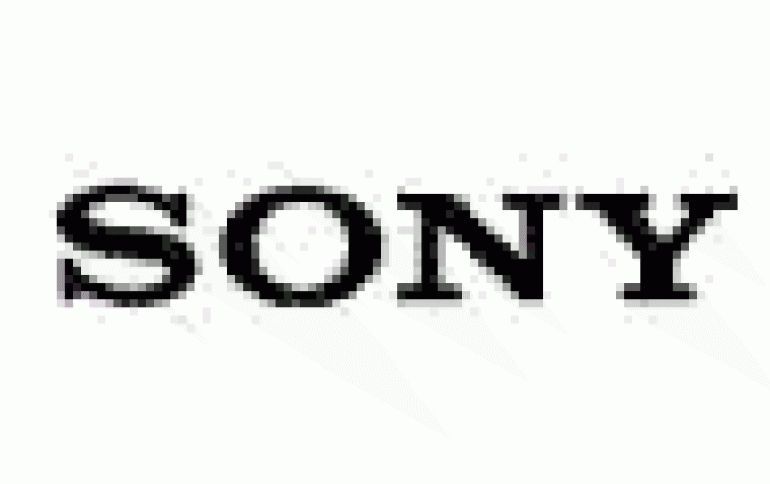
Sony Reports Second Quarterly Loss
Sony Corp. posted a second straight quarterly loss, prompting the company to slash its annual profit forecast as prices drop for its Wega flat-screen televisions and costs rise to develop the PlayStation 3 game console.
Sony, the world's second-largest maker of consumer electronics, had a net loss of 7.3 billion yen ($65 million) in its first quarter ended June 30, from a 23.3 billion yen profit a year ago. The Tokyo-based company said in a statement today that net income will be 10 billion yen this fiscal year, compared with an April forecast of 80 billion yen.
Howard Stringer, former head of Sony's U.S. media unit, took over as chief executive last month and gave himself 100 days to devise a plan to reverse two years of losses at the electronics business. Sony has lost market share to Matsushita Electric Industrial Co. in flat-screen TVs and is investing in the PlayStation 3 to fend off Microsoft Corp.'s new Xbox 360.
"The company has fallen behind the curve," said Yoji Takeda, who manages $300 million as head of Asian equities at RBC Investment Management (Asia) Ltd. in Hong Kong. Sony "is in a very difficult position. The existing products aren't doing very well, there are a lot of pricing pressures and their investments are very heavy."
Sony's results contrast with Matsushita, the world's largest consumer-electronics maker, which today reported a better-than- expected 1.8 percent gain in its first-quarter profit. The Osaka- based rival to Sony raised its half-year forecast because of higher sales of its Viera plasma display TVs.
Hitachi Ltd., Japan's largest maker of electronics, and Toshiba Corp., the world's second-biggest maker of memory chips used in consumer electronics, also reported quarterly losses.
Games
At its games division, which tracks both hardware and software revenue from the PlayStation video game series, Sony's operating loss widened to 5.9 billion yen, from a 2.88 billion yen loss a year earlier as Sony increased advertising and research and development costs.
The PlayStation 3, which is scheduled for release in the spring of 2006, will use Sony's super-fast Cell chip and also feature a next-generation DVD format the company is developing called Blu-ray.
Shipments of Sony's handheld PlayStation Portable, which the company introduced in Japan in December and the U.S. in March, are expected to rise to 13 million units this fiscal year, up from 12 million units projection made in May.
Nintendo Co., the market leader in handheld game players, today reported a 38 percent drop in fiscal first-quarter profit to 14.1 billion yen as sales declined for Game Boy Advance devices and software development costs increased.
Howard Stringer, former head of Sony's U.S. media unit, took over as chief executive last month and gave himself 100 days to devise a plan to reverse two years of losses at the electronics business. Sony has lost market share to Matsushita Electric Industrial Co. in flat-screen TVs and is investing in the PlayStation 3 to fend off Microsoft Corp.'s new Xbox 360.
"The company has fallen behind the curve," said Yoji Takeda, who manages $300 million as head of Asian equities at RBC Investment Management (Asia) Ltd. in Hong Kong. Sony "is in a very difficult position. The existing products aren't doing very well, there are a lot of pricing pressures and their investments are very heavy."
Sony's results contrast with Matsushita, the world's largest consumer-electronics maker, which today reported a better-than- expected 1.8 percent gain in its first-quarter profit. The Osaka- based rival to Sony raised its half-year forecast because of higher sales of its Viera plasma display TVs.
Hitachi Ltd., Japan's largest maker of electronics, and Toshiba Corp., the world's second-biggest maker of memory chips used in consumer electronics, also reported quarterly losses.
Games
At its games division, which tracks both hardware and software revenue from the PlayStation video game series, Sony's operating loss widened to 5.9 billion yen, from a 2.88 billion yen loss a year earlier as Sony increased advertising and research and development costs.
The PlayStation 3, which is scheduled for release in the spring of 2006, will use Sony's super-fast Cell chip and also feature a next-generation DVD format the company is developing called Blu-ray.
Shipments of Sony's handheld PlayStation Portable, which the company introduced in Japan in December and the U.S. in March, are expected to rise to 13 million units this fiscal year, up from 12 million units projection made in May.
Nintendo Co., the market leader in handheld game players, today reported a 38 percent drop in fiscal first-quarter profit to 14.1 billion yen as sales declined for Game Boy Advance devices and software development costs increased.





















